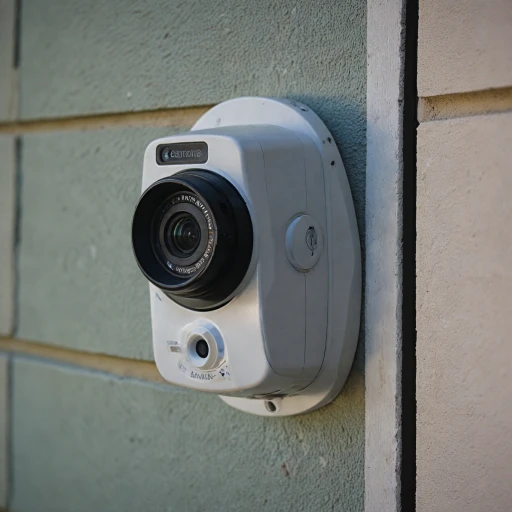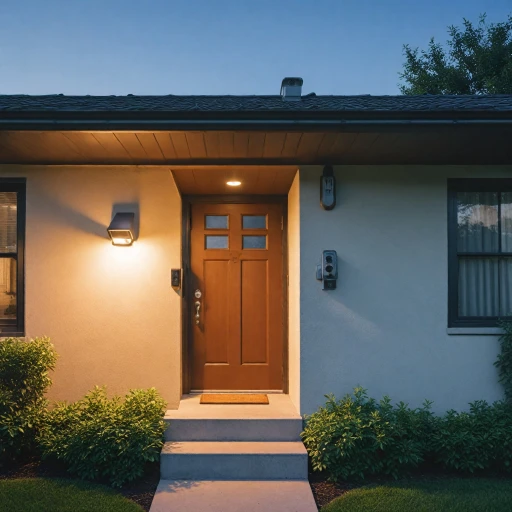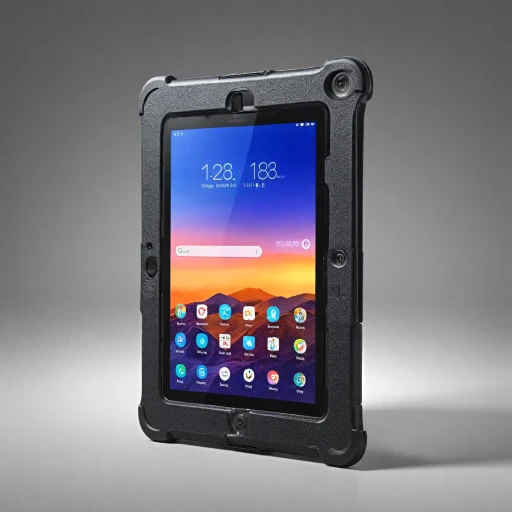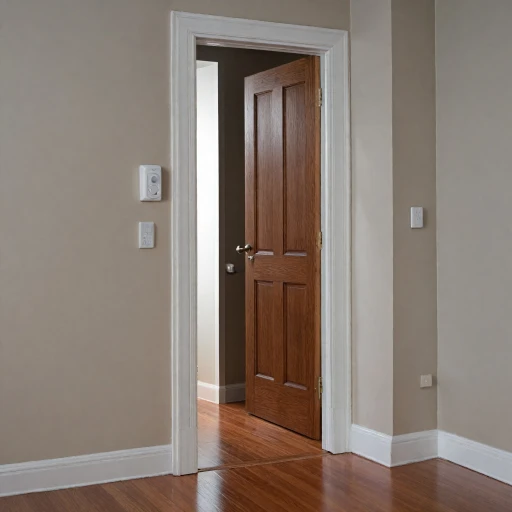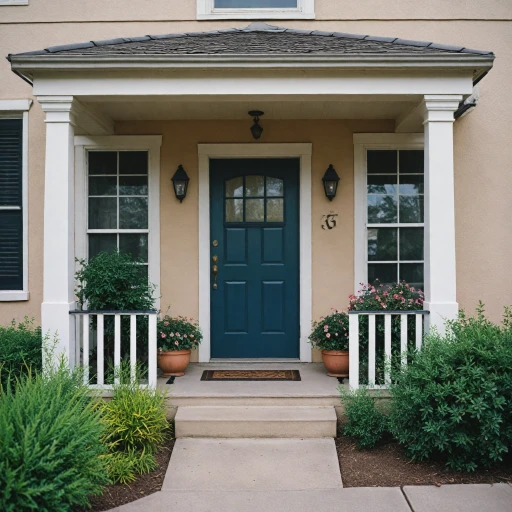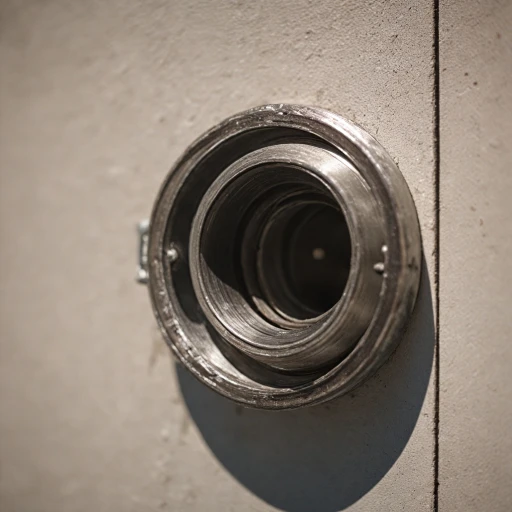Understanding Solar-Powered Security Cameras
Exploring the Basics: What Are Solar-Powered Security Cameras?
Solar-powered security cameras have revolutionized the field of home surveillance by integrating the efficiency of renewable energy. These cameras utilize solar panels to harness the power of the sun, converting it into electrical energy to operate. This makes them an excellent choice for those looking to save on electricity bills while maintaining a vigilant eye on their property. Such cameras are designed to function like any traditional security camera but with the added advantage of being powered by a clean energy source. They typically come with a built-in battery that stores solar energy, ensuring continuous operation even during the night or cloudy days. Solar-powered cameras are often wireless and can be installed in any outdoor area with adequate sunlight. This feature not only reduces installation complexity but also allows for greater flexibility in placement compared to conventional wired cameras. While considering a solar-powered security system, it's essential to look at factors such as the size and efficiency of the solar panel, battery capacity, and whether the camera offers features like night vision or smart connectivity. These aspects will influence both the regular and sale price of these devices. In addition, advancements in solar technology have made these cameras more affordable, bringing them closer to the price range of traditional models. They're increasingly being recognized as the best option for eco-conscious consumers seeking reliable, budget-friendly solutions. For those interested in future trends, solar-powered cameras are likely to see further enhancements. Innovations will continue to improve battery efficiency, image quality, and features like color night vision, making them a popular choice in the security camera market.Advantages of Solar-Powered Ring Cameras
Why Choose Solar-Powered Ring Cameras?
Solar-powered security cameras like those offered by Ring present numerous advantages, particularly when positioned outdoors. Unlike their traditional counterparts, solar-powered cameras utilize sunlight, which can significantly reduce energy costs. As these cameras harness solar power, there's no need for continuous reliance on batteries or a direct electrical connection, making them a more sustainable option.- Wireless Convenience: These cameras are designed to be wireless, which not only makes installation a breeze but also reduces the clutter of cables. This wireless feature adds an extra layer of flexibility in choosing an optimal location.
- Cost Efficiencies: With a solar panel continuously charging the battery, your need for purchasing batteries is minimized. This leads to substantial savings over time, even though the regular price of these cameras might initially seem higher than traditional options.
- Environmental Impact: By using solar panels, these security systems contribute to reducing the carbon footprint. Harnessing sunlight is not only cost-effective but also environmentally responsible.
- Enhanced Features: Solar-powered Ring cameras often come equipped with additional features such as night vision, providing superior color night recordings even in low-light conditions.
Potential Challenges and Solutions
Challenges and Practical Solutions for Solar-Powered Security Cameras
Solar-powered security cameras, like those from Ring, provide a multitude of benefits, but users may still encounter some challenges. Being informed about these potential issues and understanding how to address them can help you make the most out of your investment in solar security technologies.
Battery Performance in Varying Conditions
One major consideration is the battery performance under different weather conditions. Solar cameras are designed to work optimally with direct sunlight, allowing them to harness enough energy from the solar panels. However, in overcast conditions, batteries may not charge as efficiently. To alleviate this, it's recommended to install the cameras in areas where they will receive the most sunlight throughout the day, and consider using a backup battery for those days when sunlight is limited.
Price Concerns and Cost-Efficiency
While the initial price of solar-powered cameras can be higher than regular battery-powered or wired options, it’s crucial to consider long-term savings through reduced energy costs. Choosing reliable brands offering sales on their solar panels or bundle deals can help mitigate the initial investment. Furthermore, absence of wiring can minimize installation costs.
Optimal Night Vision Capabilities
Night vision is another feature that might challenge solar-powered security camera systems. While many modern options offer advanced color night vision capabilities, ensuring your camera's night vision settings are properly adjusted can enhance performance. Look for models specifically designed to offer optimal vision in low-light conditions combined with energy-efficient LED lights.
Weather Durability and Reliability
Lastly, consider the durability of outdoor cameras, especially in areas prone to adverse weather. Investing in high-quality, weather-resistant cameras ensures longevity and reliability. Additionally, keeping the solar panels clean from debris, snow, or dirt optimizes energy absorption, making your solar security system both effective and efficient.
When compared to regular security options, the unique challenges presented by solar-powered solutions are easily overcome with proper knowledge and planning. Embracing these advanced, cost-effective, and sustainable solutions can ultimately enhance security and save on operational costs in the long run.
Installation Tips for Optimal Performance
Strategic Placement for Solar Efficiency
When installing your solar-powered Ring camera, location plays a crucial role in its performance. To ensure the best solar gain, place the solar panel in an area that receives direct sunlight throughout the day. Avoid areas where shadows from trees, buildings, or other structures might obstruct the sunlight. Remember, maximum exposure leads to enhanced battery efficiency, enabling your security camera to operate optimally even at night, thanks to efficient solar power utilization.
Tools and Equipment You’ll Need
Having the right tools and equipment makes the installation of solar powered security cameras easier and more efficient. Ensure you have:
- A drill for mounting the brackets.
- Screws and anchors suitable for your wall material.
- A level to ensure that the solar panel is installed straight.
- A screwdriver for adjustments or re-securing parts.
The installation process involves some simple steps that can be executed effectively with the above tools.
Optimizing Performance Across Different Conditions
Solar-powered security cameras are designed to be hardy and withstand various weather conditions. For performance optimization:
- Regularly clean the solar panel to remove dust or debris that may hinder sunlight absorption.
- Adjust the panel’s angles according to the season for maximum solar efficiency.
- Consider the use of wireless outdoor mounts for easy repositioning, especially if initial placement doesn’t yield efficient solar charge.
Maintaining your solar panel regularly ensures your camera remains operational and effective, preventing potential security gaps.
Checking Battery Levels and Connectivity
One of the best practices post-installation is to periodically check the battery levels of your solar-powered security camera. Most systems offer an app or display that will inform you of the battery’s charge status. This can help you determine if the panel’s positioning needs adjustment or if another factor might be affecting solar capture. Additionally, ensuring your cameras wireless connection remains strong is crucial for real-time alerts and efficient monitoring.



